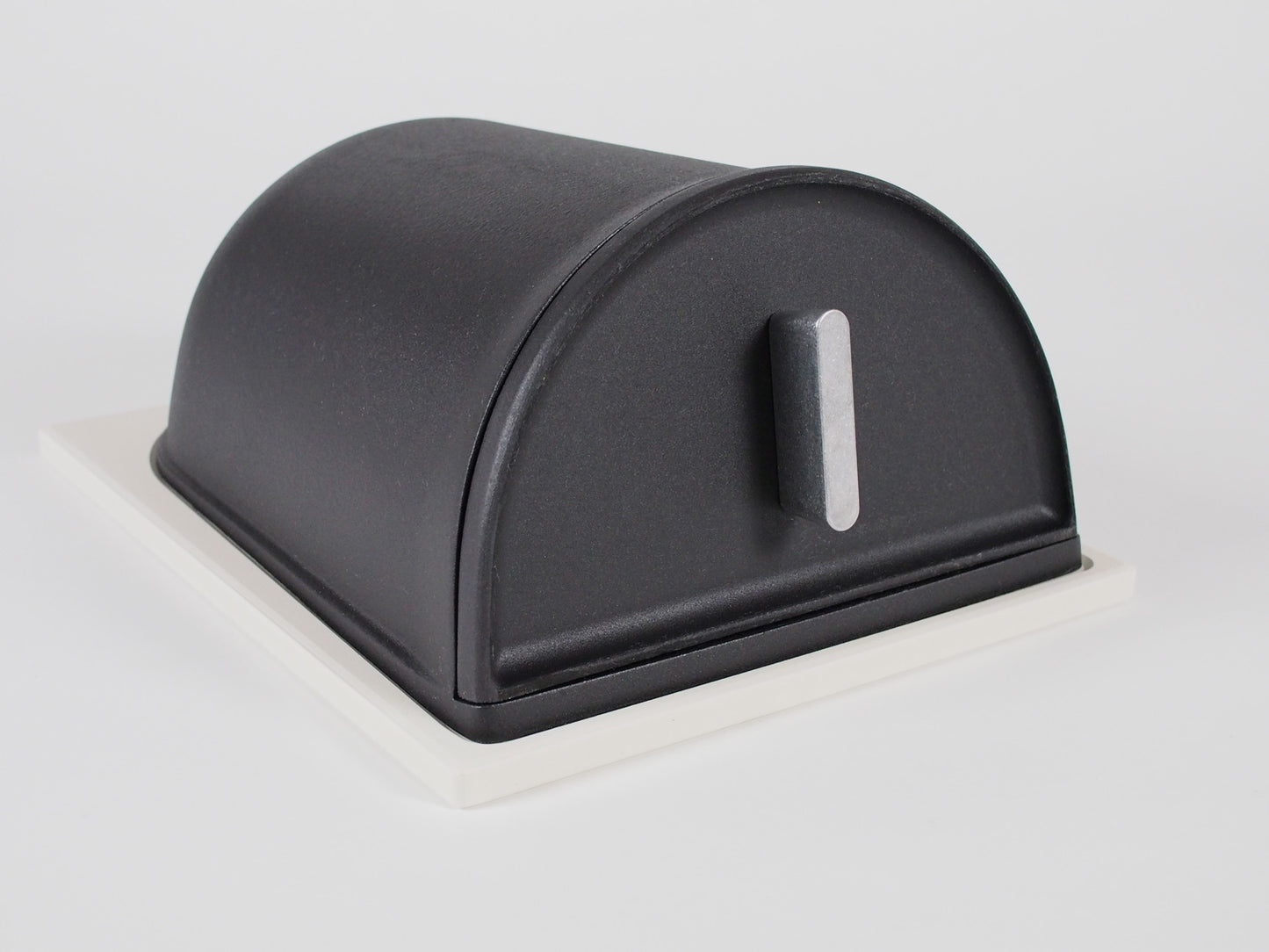
The Fourneau Grande is a totally custom manufactured product; aside from the screws that hold the handle to the hatch and the rivets in the tray, each component in the Grande is made specifically to our design specs and doesn’t exist anywhere else in the world. Making a product like this involves establishing a network of specialized manufacturers to create each component and orchestrating a process that brings all of those individual components together into the whole.
The design of the Fourneau bread oven has evolved since we originally designed and launched it in 2015. The original design was made from two materials, cast iron and wood, and at the time we were able to manufacture the whole kit with only four manufacturing partners.

As we learned more about baking and as bakers told us about their experience with the oven, ideas developed into designs. The change from an iron base to a stone base was aimed at achieving steamier baking conditions and a lighter product. The flatness of the cordierite base provides a better fit between the cloche which more effectively traps steam. The thermal shock resistance of the cordierite material allowed us to design a feature for introducing water to the baking chamber, which is a total game changer for anyone looking for gloss on their loaves. Cordierite also reduces the product’s weight compared to cast iron, making everything easier to move around the kitchen.

We also wanted to provide a solution for bakers getting burnt bottoms; some home ovens provide heat from a bottom burner which, combined with iron’s intense conveyance of heat, can scorch the bottom of a loaf pretty easily. Cordierite absorbs and releases heat a little more slowly than cast iron, and moderates the bottom heat factor.
As soon as we launched the original Fourneau, we had customers requesting a larger version for big boules and batards. The original Fourneau is 26 lbs and the Grande is about twice as large, so it was clear that a larger model would require a substantial change in process and design. Over several years we built a new supply network that could provide not only the comparatively lighter cordierite base but also a far thinner cloche casting than we could previously achieve. The result is a larger baking tool that weighs less than its smaller predecessor.
Casting a larger cloche also meant that precision would be harder to control. So we designed the seam between the hatch and the cloche in a way that allows us to machine the surfaces flat for the best possible fit between the iron parts. The hatch is also lighter yet larger than the original Fourneau hatch in part due to the light-weight aluminum handle that now adorns it.

At the heart of the Fourneau is our tray system for loading and unloading loaves from the front-opening cloche. The tray is a combination of formed aluminum sheet metal, fastened with brass rivets, and paired with a high-temperature, mesh silicone baking mat. The aluminum alloy and perforations in the silicone mat provide fast heat conduction from the cordierite base to the bottom of your bread. Fourneau trays are useful through much of the baking process from unloading bannetons, to transferring and scoring, to loading and cooling. Using multiple trays unleashes the full throughput potential of the Fourneau allowing bakers to spring loaves in the cloche and brown them in the open oven.

All together it takes a network of at least 11 different specialized factories to produce the Fourneau Grande including the producers of our packaging. Shipping heavy, thin cast iron parts around the world in the same box as a big, flat baking stone is a risky proposition. To ensure the fewest breaks we turned to an engineered paper-pulp insert for the core of our packaging. We strive to use as little plastic in our packaging as possible and in fact we reuse foam and plastic packaging every chance we get.


I loved this story! Thank you for sharing the history.
Eagerly awaiting arrival of my Grande. Can’t wait to bake sourdough batards in it.
Want to tell my daughter about her gift, but that would spoil Christmas.